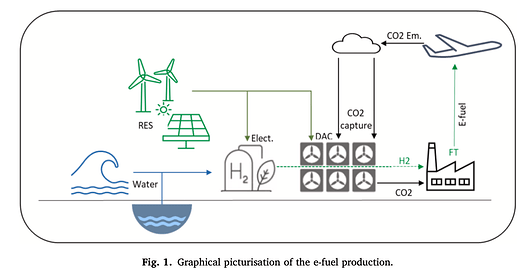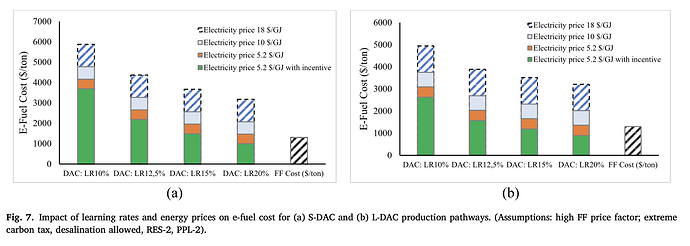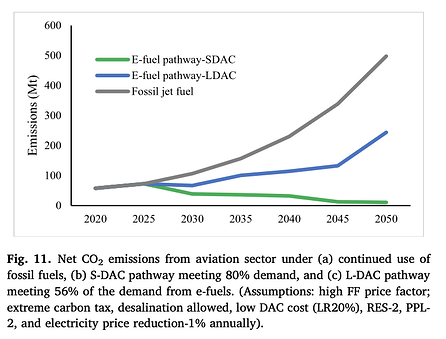Fuel from air: A techno-economic assessment of e-fuels for low-carbon aviation in China
This week, we deep dive into a paper recently published in Energy Conversion and Management. The study was led by Shubham Tiwari from the Biodiversity and Natural Resources Program of the International Institute for Applied Systems Analysis (IIASA) in Austria.
This study evaluates the feasibility of producing synthetic aviation fuels in China through direct air capture (DAC) and its potential with respect to local fuel demand by 2050. The research assesses e-fuel. The research employs techno-economic analysis and life cycle assessment methodologies to assess the economic viability and environmental impact of this production pathway, evaluating production costs and resource requirements under diverse scenarios, incorporating spatio-temporal variations in electricity, water, transportation, and policies.
Aviation, together with heavy industry, is projected to remain a substantial net emitter: it relies on highly carbon-intensive fuels, and reducing emissions is hard due to the lack of competitive substitutes. In this light, sustainable aviation fuels will play a critical role and are expected to meet 80 % of aviation fuel demand by 2050. Sustainable aviation fuels represent low or zero-emission fuel solutions, and include hydrogen, biofuels, and artificial hydrocarbons. Green e-fuels are almost zero-emission products produced by using hydrogen (from a renewable energy-based electrolysis process) and CO2 captured through direct air capture (DAC) plants as feedstocks. Compared to bio-fuels, e-fuels present lower barriers related to resource and land availability constraints, yet face a major cost-competitiveness challenge with respect to current fossil-based fuels.
Results show that DAC capital costs and the energy market are the primary determinants. By 2050, China could produce 102 Mt of e-fuels, meeting 84% of its demand, requiring 3457 TWh of renewable electricity and 597 billion liters of water, 78% of which would come from desalination. E-fuel costs would remain 2.5–4 times higher than fossil jet fuels: achieving cost parity would require low electricity prices, high DAC learning rates, and strong policy incentives.
Here is a list of the main takeaways of this paper:
- Synthetic aviation fuel made from air-captured carbon and renewable hydrogen is technically feasible for reducing emissions in China’s aviation sector.
- Production costs are still high, with prices ranging from $5.16 to $6.53 per kilogram, mainly due to electricity and carbon capture technology expenses.
- These fuels can significantly cut greenhouse gas emissions compared to traditional fossil-based jet fuel, based on full life cycle analysis.
- Their economic viability relies on future reductions in the cost of renewable electricity, carbon capture systems, and hydrogen production.
- Strong government support will be necessary, including subsidies or carbon pricing, to make these low-carbon fuels competitive and scalable.
Read the full paper here: Fuel from air: A techno-economic assessment of e-fuels for low-carbon aviation in China


